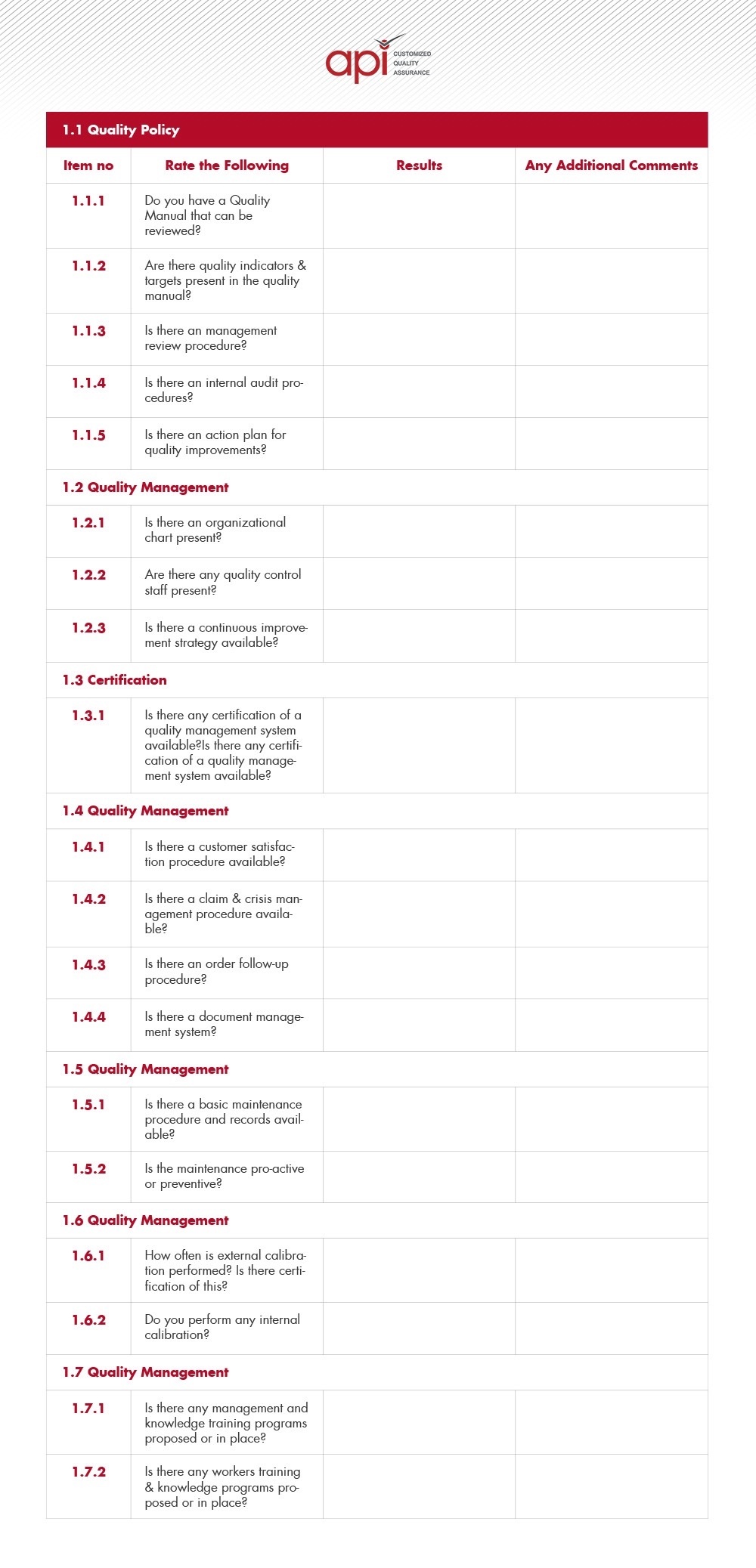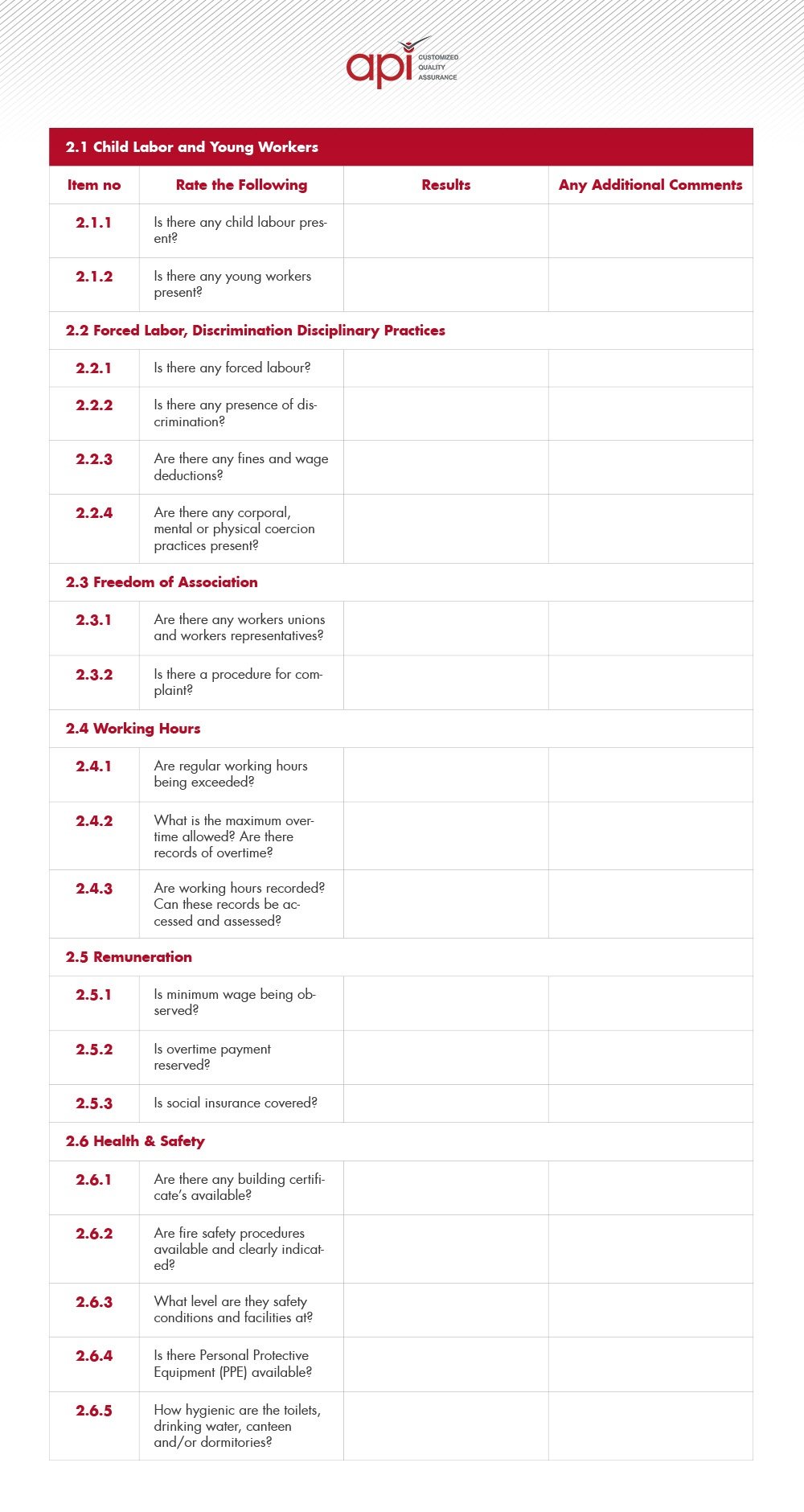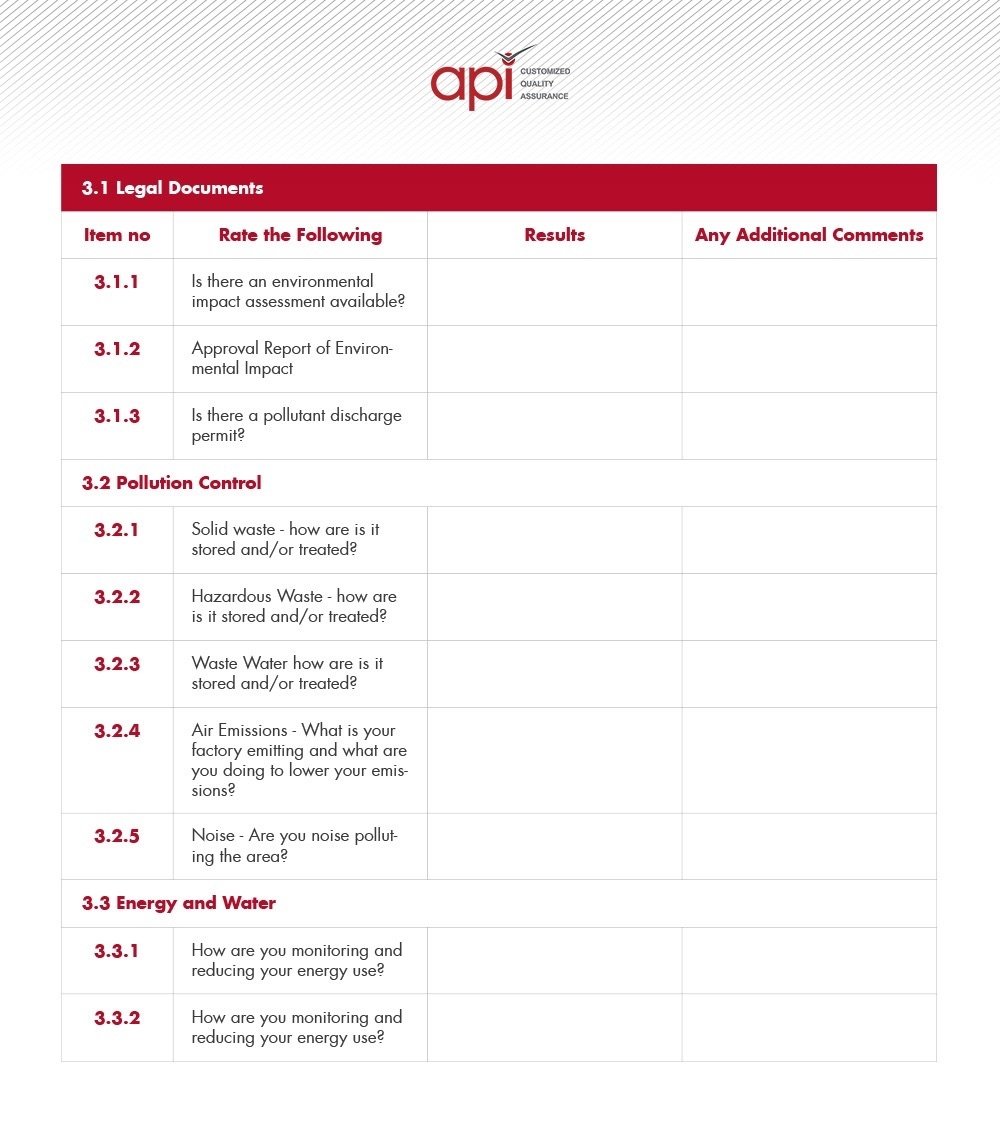Household goods manufacturing and supply chain operations are often vulnerable to compliance and regulation violations.
With the pace at which the many complex parts of a supply chain can move, it’s no wonder that retailers who trust too willingly in their suppliers can land up in hot water when things don’t go according to plan.
The only way to address these challenges head on is by conducting a quality audit.
Discover our factory quality audit checklist that touches on quality management, social and environmental compliance here.
An audit of your supplier’s factory is conducted to ensure that your supplier and their factory’s operations are able to
produce your product to your expected levels of quality, as well as ensure compliance in your product’s destination market.
This is not the only reason though…
Carrying out audits also help to assess the risks that may be present with a particular supplier and provide direction on
how you can go about managing that risk.
Ultimately, the decision to work with a particularly supplier will be up to you, but your decision will at least be based on a trusted risk assessment with a presented improvement strategy.
Our checklist takes you through a what a brief assessment of your supplier’s quality systems would/should look like.
We will cover 3 main sections in this checklist:
- Quality Assurance & Technical Questions
- Social / Health & Safety Questions
- Environmental Audit Questions
How Does A Quality Audit Grading System work?
For each checkpoint, the following guideline should be used;
N/A – Checkpoint not available or not evaluated.
0 – Major non-conformity – absence of procedure or proof of big discrepancies in implementation – a corrective action will be designed for this checkpoint.
1 – Minor non-conformity – incomplete procedure or proof of discrepancies in implementation – a corrective action will be designed for this checkpoint.
2 – Acceptable – procedures are available and implementation is acceptable, however opportunities for improvement exist – an opportunity for improvement can be designed for this checkpoint.
3 – Good – procedure and implementation acceptable, no opportunity for improvement identified.
4 – Best Practice – factory has designed and implemented best practice of industry.
Quality Assurance & Technical Questions
 WHAT TO LOOK OUT FOR:
WHAT TO LOOK OUT FOR:
- Quality manual and all procedures show revision control (sign-offs & dates), history of changes
- Product quality yield data, problems and corresponding improvement actions, status of preventive/ corrective/audit results
- Strategic and tactical objectives, goals, action plans, etc.
- Analysis of field failures, inspection yields, resource needs, internal audit results, corrective action status, etc.
- Management review meetings, goal setting, performance measurement, internal audits, action plans, customer surveys
- Employee involvement/recognition program, Lean, Six Sigma, kaizen, SPC, 5-S, cost reduction programme
- Corrective actions, trend charts, meeting minutes, non-conformance frequency & cost analysis
- Management review meetings and corrective actions
- Look for use of training aids and work instructions at work stations
- Qualification records, certification history
- Records of testing, production quality records, audit records, interview workers to validate training records
- Job descriptions, job skills assessment, training records, training manuals
What if my quality assurance score is below standard?
API is able to
customize its QA solutions based on your specific needs and requirements. API will provide the supplier information on how they can go about improving various things within a factory. This information will be relayed back you, the retailer, where you will gain insight into your potential supplier and their factory operations to ensure compliance across the board.
SOCIAL / HEALTH & SAFETY QUESTIONS

What to look out for:
- Procedure for training and communication and participation
- Emergency preparedness and response plan, monitoring and performance measurements
- Policies and procedures, health and safety trend charts, accident rate improvement history
- Safety committee or group meeting minutes, accident investigation reports, safety audit reports
The social audit assesses the social systems and structures that your supplier has in place and is normally based on the
standards as laid out by the SA8000. As a professional third party auditing company, API is able to provide their industry expertise and long time experience to aid you in achieving your social compliance certification.
Environmental Audit Questions

What to look out for:
- Environmental policy statement document
- Records of agency/government inspection, procedures for measuring and monitoring environmentally sensitive activities
- Record of purchases, waste stream and consumption; inventory control procedures
- Records/use of; non-hazardous (RoHS/WEEE compliant) materials in production, biodegradable materials, returnable containers or packaging, recycling program, packaging materials made of recycled materials
Key Takeaways
A factory quality audit checklist allows you insight into your suppliers quality control processes and manufacturing capabilities, their strengths and weaknesses. This empowers you to strengthen those weaker processes where needed.
A quality audit checklist will help ensure:
- your factory’s quality systems are up to date, organized and well recorded.
- confidence in the selection of your supplier based on checklist insights.
- confidence in the quality of the product that is manufactured.
- confidence that compliance standards are actively being met by your supplier.
This approach allows you to
build a more collaborative relationship with your supplier, where you supplier has a more invested approach to your brand and its product. It helps to ensure top class quality systems and a mutually beneficial relationship between supplier and retailer.
 WHAT TO LOOK OUT FOR:
WHAT TO LOOK OUT FOR:


